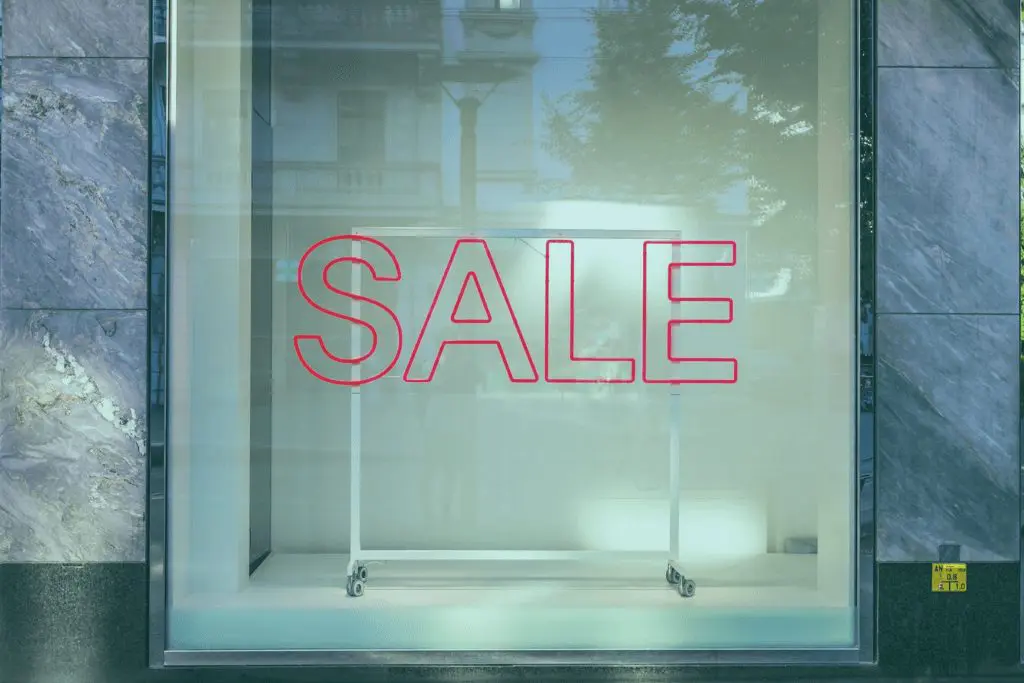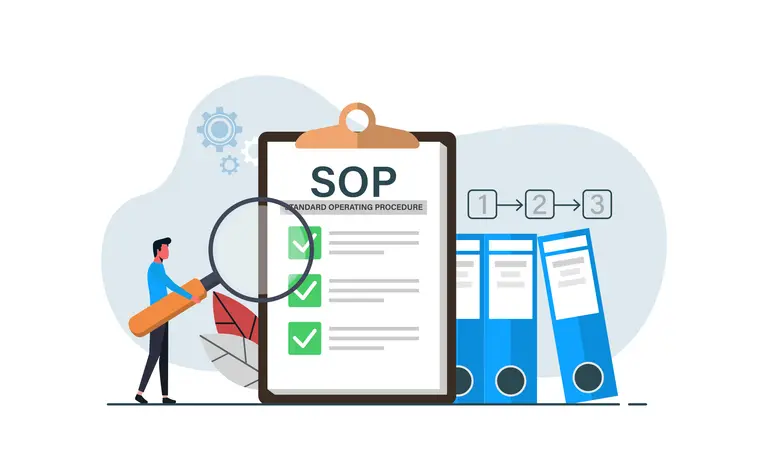If you own a business then you have most probably faced the problem of having excess inventory. Selling excess inventory is a serious burden, yet keeping it is even a bigger burden. Having extra inventory is a common problem that almost all businesses face. But it is extremely costly and bad for the company’s cash flow. The best solution is to sell excess inventory. For example, there are different companies that are excess inventory buyers and would buy extra inventory from you.
In this post, we’ll present you a complete guide for selling excess inventory. Keep reading to find out the best way to get rid of extra inventory at a maximum.
What is Excess Stock and Why You Have it?
First, let’s understand what is excess inventory and how it forms. It’s the stock that hasn’t sold out by the end of its product cycle. Such products are very costly to keep because they take a lot of shelf space. Surplus inventory happens when you fail to properly forecast the expected demand and sales. By ordering way too much than you can sell, you end up with overstock items. Other reasons include canceled orders, weather changes, or economic fluctuations.
If you face such situations of poor inventory management, then you end up with extra stock. Clothing inventory or any other type of inventory that is slow-moving has many disadvantages. You need to find a way to get rid of it. So selling old inventory is very important for improving the profitability of your business. Below, we reveal the best ways to sell excess inventory.

Top 5 ways to sell excess inventory at maximum:
After identifying your surplus stock, here are 5 ways to sell your excess inventory:
-
Liquidation
One of the most popular ways of selling excess inventory is to find a liquidator, who will buy all types of inventory. Most clothing stores sell excess inventory clothing to such organizations. This is by far the fastest way to sell clothing inventory or any other excess stock you have. Inventory liquidators are excess inventory buyers, who take the stock straight from the merchants. This is the best method to free up your space and capital fast, but it’s not the most profitable way.
This method, however, includes some disadvantages. Firstly, consider the cost of delivering your inventory to the buyer. Next, always make sure to know the value of your merchandise before entering into a negotiation. Lastly, if you run a brand sensitive business, be careful when choosing a liquidating company. You don’t want them to jeopardize your brand. But selling your excess inventory to such organization is very beneficial if you don’t want to offer steep discounts. Offering steep discounts can create branding issues for some businesses.
And after all, even if you make very little profit is the least of the problems of having excess inventory. Keeping the extra inventory on hand would be way more pricey than selling it cheap. Start by registering on Liquidation.com website, which is the biggest marketplace for liquidity services.
-
Third-Party Websites
In case when you don’t have enough stock to sell it to wholesales liquidators, then you can consider selling your old inventory online. Many small businesses sell their excess inventory to third-party websites. For example, Amazon and eBay are great online channels to reach many potential consumers. These work perfectly well when there’s insufficient demand and are often used by many retailers. You can also try to sell via local online shops. Selling locally will also help drive more traffic to your store and enlarge your customer base.
If you decide to sell your old inventory through third-party websites, then you should be aware of the risks too. You will face competition, so you will have to offer a lower price to attract customers. Also, each website has its own rules and fees, which you need to carefully read before involving into the affair. You will have to sell in accordance with all the policies that the website has set. Unfortunately, this might put some limitations on what, how, and when you can sell.
Selling online requires way more work than just selling it to someone, like in liquidation merchandise. This method will take more time because you’ll have to create product pages, descriptions, and photographs for each piece. Yet, they are a great way to sell excess inventory stock.
-
Huge Discounts
You can’t just sell the excess inventory because there’s low demand for it. One way to boost demand is to offer steep discounts. You have higher chances to sell the overstock at discounted prices. However, you need to have a strategic approach when it comes to discounts. Discounts between 40-70% usually drive sales effectively. Here are the most effective types of sales you want to have:
- Clearance sale – you can run these several times a year. Send your customers a customized email that you are having a clearance sale and wait for the sales to boost. Consider advertising via social media as well. If you have data on a specific shopper’s preferences then use it to create a personalized approach.
- Seasonal sale – as the season changes, so does your product line. This is a great time to offer seasonal sales and avoid generating an excess inventory. There is always a segment of shoppers who are looking for hot deals of seasonal sales. Use pop-up promotions to let people know about the hot sales they don’t want to miss.
- Flash sale – this is the sale type that creates a sense of urgency. It’s one of the most effective discount types because it carries a psychological effect. All you need to do is to notify people about a limited time sale you’re currently running. Make sure to notify them a few days before to build anticipation.
Be sure to offer discounts on a regular basis because people would refuse to buy products at full price. Also, remember that discounting merchandise may not work well for every business. If you operate in a high-end market, offering steep discounts may do more harm than good.
-
Freebies and Gifts
Another way to increase demand is to set up an incentive strategy. If people refuse to buy the products that ended up in your excess stock, you might consider to gift them. You can use your excess inventory products as incentives. If an existing customer refuses to buy it, don’t give up easily. Think of creative ways to bring in new customers. For example, offer a promotion like “Free gift for the first purchase” or “Thank you gift for the first-time customers.”
You can use the old inventory as an incentive for customers to bring their friends. This is a great way to sell excess inventory clothing. Consider the following: “Get one free bag with each new client you refer to us.” You can also use the excess inventory to build your email subscription list. For example, you can motivate people to sign up for your newsletter and offer them a free pair of socks with the next purchase. Yet, another way to get rid of excess clothing inventory. This method won’t bring much profit, but if implemented strategically, it will drive sales. And most importantly, it will bring new customers and improve your customer loyalty.
-
Bundling
This is one of the most popular ways to sell obsolete inventory after the discount method. Bundling is all about pairing one product with another or multiple products. When you sell products as a bundle, you offer a slightly lower price than when you sell them separately. This deal is very attractive to buyers. Here are the two ways you want to bundle your products:
- Bundle complementary products
You can bundle complementary products together to create an attractive package deal. This is again a great way to sell excess inventory clothing. For example, you want to sell your last season sunglasses that no one wants to buy. However, everyone’s buying the latest swimsuits. You can bundle up these two and offer a slightly higher price for two compared to the swimsuit alone. Or offer a 50% discount for the second product in the bundle!
- Bundle fast-moving products with slow-moving ones
The most effective way to bundle the products is to mix and match fast- and slow-moving inventory items. If customers want to buy a top-selling product, the probability that they would buy it in a bundle is high. They are more inclined to go for the bundle deal than a single product purchase.
Everyone loves a great deal and it’s hard to resist an attractive limited-time offer!

And if everything fails then…
-
Remarket and Reposition the Products
Try to remarket your products that are not selling well. Maybe the problem lies in the poor marketing of the products. Try to remarket and reposition your slow-moving inventory. Consider the following tips:
- Use new keywords in product titles and descriptions,
- Take new pictures to give your products a fresh look,
- Hire qualified staff that can do a great job in selling,
- Change the products’ place in the store or on-site.
You need to analyze your own store and try to understand what must be changed. If the problem indeed lies in poor product marketing and positioning, then consider altering your marketing strategy.
-
Donate the Extra Stock
If none of the mentioned methods works for you then you should consider a donation. You can donate the excess inventory to charity. This method would bring you 0 profit, however, it can bring so much value to your brand. By donating, your company would get involved in corporate social responsibility, which plays an important role in your brand. Being socially responsible is a very powerful tool for improving your brand image and perception. You will create a positive image in the eyes of the community and, thereby, improve customer engagement.
Another great advantage of donation is that you’ll get tax deductions. You need to do a small research on how these tax deductions work in your country. In the United States, companies that donate to schools, churches, and non-profits can earn a federal income tax deduction. Sometimes, deductions can be up to twice-cost. So donations are a great way to rid yourself from the excess inventory, most importantly for building your brand image. You’re not going to through away that old inventory anyways, are you?
-
Contact Suppliers To Check for Return/Exchange Options
This might seem completely useless, but why not to try to return the inventory? You can contact your suppliers and discuss with them all the options of returning or exchanging the products. However, keep in mind that the inventory should correspond to some criteria. This would increase the chances that the supplier might take it back.
Firstly, the inventory should be packaged and undamaged. Next, you want to be sure that the supplier wants to keep you as their customer. So you must be their loyal customer. And lastly, you should be very convincing on why the product didn’t sell (e.g. it was wrong for your market). Be sure that your case is persuasive. Otherwise, you’d have little chances of returning or exchanging the inventory.
Conclusion
All businesses have excess stock because it’s simply inevitable. The real question is how to sell old inventory without too much damage? You should always remember that keeping the excess stock is always worse than giving it for free. Be strategic and savvy when it comes to selling excess inventory. Above, we’ve presented you with the most effective ways to sell excess stock. You can use these tactics to convert the slow-moving inventory into cash. Or simply get rid of it with maximum benefit for your business. Use these methods wisely!






